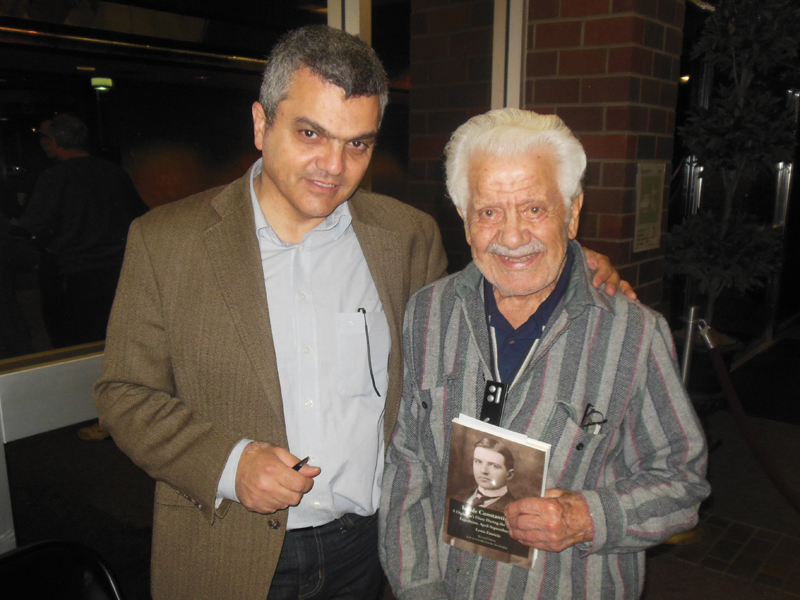
Denise Altounian – Staff Writer
Many people are familiar with American Ambassador Henry Morgenthau’s account of the Armenian Genocide in his work Ambassador Morgenthau’s Story (1918). In the years following its publication, it has become one of the primary sources in studying the Genocide of 1915. However it is safe to say many people are not familiar with an equally important work written by a fellow American diplomat, Lewis Einstein.
Einstein’s newly published work, entitled Inside Constantinople: A Diplomat’s Diary during the Dardanelle’s Expedition, April-September 1915, is an equally important, if not more significant work to Armenian Genocide studies and recognition. Published by the Gomidas Institute (London), with the support of the Armenian Studies Program at Fresno State, Einstein’s work is part of a series that is dedicated to the 100th anniversary of the Armenian Genocide.
Ara Sarafian, director of the Gomidas Institute and the editor of Inside Constantinople, spoke at Fresno State on Tuesday, April 1, on “Saving Armenians: The United States and the Armenian Genocide Thesis, 1915,” presenting new insights into the role of the United States in documenting the Armenian Genocide and publicizing the plight of Armenians in 1915
Inside Constantinople, based on Lewis Einstein’s personal diary, is one of the earliest accounts of the Genocide from an American perspective, even predating Morgenthau’s work. Einstein was a career diplomat stationed in Constantinople during World War I and would serve as an important witness to events leading up to and following April 1915. He was appointed to serve in Constantinople as an intermediary for Allied interests in the region. Einstein began keeping a diary to document the Dardanelles campaign and in the process began recording daily events. His diary gives detailed accounts of the deportations in its earliest stages and the escalation of violence to eventually reach genocidal proportions. This is significant because it gives a chronological account of the United State’s knowledge of the events.
Sarafian introduced the audience to Einstein’s work, by reading passages from the book, noting that the book can be described as unpolished, per Einstein’s wishes. He knew the significance of what he documented and wanted to keep its original integrity. This is especially important today as deniers of the Genocide attempt to attack primary sources to cause doubt in calls for recognition of the Armenian Genocide.
Just as Lewis Einstein’s account of the Genocide is unfamiliar to many, the American relief effort for the victims of the Genocide is also a little known part of American history. The United States played a unique role as a witness to the Genocide who chose to act. American missionaries in the Ottoman Empire played a crucial role in relaying the information of the atrocities taking place within the empire back to the United States. As the Genocide unfolded, the Ottoman government attempted to control the flow of information through censorship. It was the Americans that were able to get the information out to the Bible houses, embassies and the State Department.
Eventually that provided enough information for the Americans to realize as early as June 1915 that organized massacres was taking place in the Ottoman Empire.
However Americans were not simple bystanders. The U.S. Embassy organized a relief program that raised funds to take care of refugees. What was eventually known as the Near East Relief went on to mount the largest humanitarian intervention program in American history and American dollars helped to save tens of thousands of Armenian lives.
Inside Constantinople is a significant work for future studies of the Armenian Genocide. This book single-handedly shows that Americans were very much aware of what was happening in the Ottoman Empire in 1915. We can only hope that as the hundredth anniversary of the Armenian Genocide approaches, works like this will receive more attention to further the campaign for recognition.
 Hye Sharzhoom Armenian Action
Hye Sharzhoom Armenian Action
